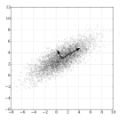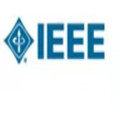Image classification is a major application domain for conventional deep learning (DL). Quantum machine learning (QML) has the potential to revolutionize image classification. In any typical DL-based image classification, we use convolutional neural network (CNN) to extract features from the image and multi-layer perceptron network (MLP) to create the actual decision boundaries. On one hand, QML models can be useful in both of these tasks. Convolution with parameterized quantum circuits (Quanvolution) can extract rich features from the images. On the other hand, quantum neural network (QNN) models can create complex decision boundaries. Therefore, Quanvolution and QNN can be used to create an end-to-end QML model for image classification. Alternatively, we can extract image features separately using classical dimension reduction techniques such as, Principal Components Analysis (PCA) or Convolutional Autoencoder (CAE) and use the extracted features to train a QNN. We review two proposals on quantum-classical hybrid ML models for image classification namely, Quanvolutional Neural Network and dimension reduction using a classical algorithm followed by QNN. Particularly, we make a case for trainable filters in Quanvolution and CAE-based feature extraction for image datasets (instead of dimension reduction using linear transformations such as, PCA). We discuss various design choices, potential opportunities, and drawbacks of these models. We also release a Python-based framework to create and explore these hybrid models with a variety of design choices.
翻译:图像分类是常规深层学习( DL) 的主要应用领域。 量子机器学习( QML) 具有革命图像分类的潜力。 在任何典型的 DL 图像分类中, 我们使用进化神经网络( CNN) 来从图像和多层透视网络( MLP) 中提取特征, 以创建实际的决定界限。 一方面, QML 模型可以在这两个任务中有用。 使用参数化量子电路( 量子电路( 量子) 可以从图像中提取丰富的特征。 另一方面, 量子神经网络( QNNN) 模型可以创造复杂的决策界限。 因此, Qualvolution 和 QNNNN可以用来为图像分类创建端到端的 QML模型。 或者, 我们可以使用经典化分析( 主构分析( PCA) ) 或 进化自动解( CAE), 并使用提取的量级混合混合模型, 我们用量级混合混合混合混合模型来进行图像分类。





